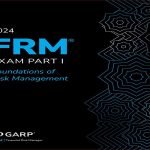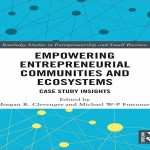- عنوان کتاب: Food Safety / Quality Control and Management
- نویسنده: Mohammed Kuddus
- حوزه: تغذیه سالم
- سال انتشار: 2024
- تعداد صفحه: 291
- زبان اصلی: انگلیسی
- نوع فایل: pdf
- حجم فایل: 3.90 مگابایت
به این مجموعه جامع که جنبه های مختلف ایمنی مواد غذایی، کنترل کیفیت و تجزیه و تحلیل آلاینده ها در محصولات غذایی را بررسی می کند، خوش آمدید. در دنیای جهانی شده امروز، اطمینان از ایمنی و کیفیت غذایی که مصرف می کنیم از اهمیت بالایی برخوردار است. هدف این مجموعه موضوعات، روشن کردن رویکردهای تحلیلی، تکنیکها و پیشرفتها در زمینه ایمنی مواد غذایی و تضمین کیفیت است. در این کتاب 16 نسخه خطی برای چاپ پذیرفته شده است که توسط 56 نویسنده از هند، چین، ایتالیا، برزیل، هند غربی، مکزیک و بنگلادش ارائه شده است. همکاری و پاسخ به موقع همکاران برای تکمیل این کتاب بسیار ستودنی است. فصل 1: در این فصل، نویسندگان به روشهای تحلیلی مختلفی که برای اندازهگیری و شناسایی آلایندههای مواد غذایی استفاده میشوند، میپردازند. آنها آخرین پیشرفتها در تکنیکهای ابزاری، روشهای آمادهسازی نمونه و روشهای تجزیه و تحلیل دادهها را بررسی میکنند که به تشخیص دقیق و قابل اعتماد آلایندهها در غذا کمک میکند. فصل 2: این فصل بر اقدامات کنترل کیفیت و استراتژی های ارزیابی ریسک اجرا شده در صنایع غذایی برای کاهش خطرات احتمالی مرتبط با فرآیندهای ذخیره سازی و بسته بندی تمرکز دارد. فصل 3: این فصل به بررسی کاربردهای این ابزار تحلیلی قدرتمند در شناسایی و تعیین کمیت آلاینده ها در ماتریس های مختلف مواد غذایی، ارتقای استانداردهای ایمنی مواد غذایی می پردازد. فصل 4: در این فصل، نویسندگان نقش تجزیه و تحلیل FTIR را در تأیید اصالت محصولات غذایی، تشخیص تقلب و ارزیابی کیفیت کلی آنها بررسی می کنند. فصل 5: این فصل بر تجزیه و تحلیل نگهدارندههای مواد غذایی با استفاده از تکنیکهای کروماتوگرافی تمرکز میکند و بر اهمیت کمیسازی دقیق و نظارت بر این افزودنیها برای ایمنی مصرفکننده تاکید میکند. فصل 6: این فصل روشها و تکنیکهای مورد استفاده برای تشخیص و تعیین کمیت آفلاتوکسینها در محصولات لبنی را با هدف به حداقل رساندن حضور آنها و حفاظت از سلامت عمومی بررسی میکند. فصل 7: این فصل روشهای تحلیلی مورد استفاده برای تجزیه و تحلیل آلودگی فلزات سنگین در غذاهای دریایی را بررسی میکند و اقدامات نظارتی و کنترلی مؤثری را برای اطمینان از ایمنی این مواد غذایی پرمصرف ممکن میسازد. فصل 8: در این فصل، نویسندگان به بررسی کاربرد تکنیکهای ELISA و PCR برای ارزیابی سریع و دقیق آلایندههای بیولوژیکی در مواد غذایی میپردازند که مداخله و پیشگیری به موقع را تسهیل میکند. فصل 9: این فصل روشهای تست هوشمند در نقطه مراقبت را مورد بحث قرار میدهد که به طور خاص برای تشخیص مایکوتوکسینها طراحی شدهاند و از شناسایی سریع و پیشگیری از این سموم مضر اطمینان میدهند. فصل 10: این فصل روشهای مختلفی را که برای تجزیه مایکوتوکسین در مواد غذایی به کار میرود، از جمله رویکردهای فیزیکی، شیمیایی و بیولوژیکی، با هدف کاهش خطرات بهداشتی مرتبط با آلودگی مایکوتوکسین بررسی میکند. فصل 11: این فصل کاوش عمیقی در مورد فناوری تابش مواد غذایی، کاربردها، مزایا و ملاحظات نظارتی آن در تضمین ایمنی مواد غذایی ارائه می دهد. فصل 12: این فصل به بررسی استفاده از نانوذرات معدنی برای تشخیص، حذف و پایش آلایندهها در مواد غذایی میپردازد و پتانسیل آنها را برای اقدامات ایمنی مواد غذایی پایدار برجسته میکند. فصل 13: این فصل به بررسی کاربردهای فعلی نانوزیم ها در ایمنی مواد غذایی، پرداختن به چالش ها و پیشرفت های بالقوه آینده در تضمین کیفیت و یکپارچگی محصولات غذایی می پردازد. فصل 14: این فصل نوآوری های اخیر، از جمله حسگرهای زیستی، بسته بندی هوشمند، و زنجیره بلوکی و سهم قابل توجه آنها در بهبود سیستم های ایمنی مواد غذایی، شفافیت زنجیره تامین و اعتماد مصرف کننده را نشان می دهد. فصل 15: این فصل بر مدیریت آلرژن های غذایی، از جمله تکنیک های تشخیص آلرژن، مقررات برچسب گذاری و بهترین شیوه ها در تولید و جابجایی مواد غذایی، با هدف کاهش خطرات بالقوه سلامت مرتبط با غذاهای آلرژی زا تمرکز دارد. فصل 16: این فصل ارزیابی آلاینده های مواد غذایی را به طور خاص در محصولات گوشتی بررسی می کند و بر اهمیت تجزیه و تحلیل قابل اعتماد و اقدامات کنترل کیفیت برای محافظت از سلامت مصرف کنندگان تأکید می کند. ما امیدواریم که این مجموعه به عنوان یک منبع ارزشمند برای دانشجویان، محققان، متخصصان صنایع غذایی و سیاست گذاران عمل کند و بینش هایی را در مورد رویکردهای تحلیلی، تکنیک ها و فناوری های به کار گرفته شده در ارزیابی و مدیریت ایمنی و کیفیت مواد غذایی ارائه دهد. تخصص مشارکت کنندگان و گستردگی موضوعات تحت پوشش، درک جامعی از چالش ها و پیشرفت ها در این زمینه حیاتی را تضمین می کند. ما از انتشارات CRC برای تلاش مصمم آنها برای انتشار کتاب در برنامه زمانبندی سپاسگزاریم.
Welcome to this comprehensive compilation exploring various aspects of food safety, quality control, and the analysis of contaminants in food products. In today’s globalized world, ensuring the safety and quality of the food we consume is of paramount importance. This collection of topics aims to shed light on the analytical approaches, techniques, and advancements in the field of food safety and quality assurance. There are 16 manuscripts accepted for publication in this book contributed by 56 authors from India, China, Italy, Brazil, West Indies, Mexico and Bangladesh. The contributors’ co-operation and timely responses to complete this book is highly commendable. Chapter 1: In this chapter, authors delve into the various analytical approaches employed for the measurement and identification of food contaminants. They explore the latest advancements in instrumental techniques, sample preparation methodologies and data analysis methods that aid in accurate and reliable detection of contaminants in food. Chapter 2: This chapter focuses on quality control measures and risk assessment strategies implemented in the food industry to mitigate potential hazards associated with storage and packaging processes. Chapter 3: This chapter explores the applications of this powerful analytical tool in identifying and quantifying contaminants in various food matrices, enhancing food safety standards. Chapter 4: In this chapter, the authors examine the role of FTIR analysis in verifying the authenticity of food products, detecting adulteration and assessing their overall quality. Chapter 5: This chapter focuses on the analysis of food preservatives using chromatographic techniques, highlighting the importance of accurate quantification and monitoring of these additives for consumer safety. Chapter 6: This chapter explores the methods and techniques employed for the detection and quantification of aflatoxins in dairy products, aiming to minimize their presence and protect public health. Chapter 7: This chapter investigates the analytical methods used to analyze heavy metal contamination in seafood, enabling effective monitoring and control measures to ensure the safety of these highly consumed food items. Chapter 8: In this chapter, authors explore the application of ELISA and PCR techniques for the rapid and accurate assessment of biological contaminants in food, facilitating timely intervention and prevention. Chapter 9: This chapter discusses intelligent point-of-care testing methods specifically designed for the detection of mycotoxins, ensuring prompt identification and prevention of these harmful toxins. Chapter 10: This chapter examines the various methods employed for mycotoxin degradation in food, including physical, chemical and biological approaches, aiming to reduce the health risks associated with mycotoxin contamination. Chapter 11: This chapter provides an in-depth exploration of food irradiation technology, its applications, benefits and regulatory considerations in ensuring food safety. Chapter 12: This chapter investigates the utilization of inorganic nanoparticles for the detection, elimination and monitoring of contaminants in food, highlighting their potential for sustainable food safety practices. Chapter 13: This chapter explores the current applications of nanozymes in food safety, addressing their challenges and potential future advancements in ensuring the quality and integrity of food products. Chapter 14: This chapter showcases recent innovations, including biosensors, smart packaging, and blockchain, and their significant contributions to improving food safety systems, supply chain transparency and consumer trust. Chapter 15: This chapter focuses on the management of food allergens, including allergen detection techniques, labeling regulations and best practices in food production and handling, aiming to mitigate the potential health hazards associated with allergenic foods. Chapter 16: This chapter explores the assessment of food contaminants specifically in meat products, emphasizing the importance of reliable analysis and quality control measures to safeguard consumers’ health. We hope this compilation serves as a valuable resource for students, researchers, food industry professionals, and policymakers, providing insights into the analytical approaches, techniques, and technologies employed in the assessment and management of food safety and quality. The contributors’ expertise and the breadth of topics covered ensure a comprehensive understanding of the challenges and advancements in this critical field. We are grateful to the CRC Press for their determined effort to publish the book on schedule.
این کتاب را میتوانید بصورت رایگان از لینک زیر دانلود نمایید.

































نظرات کاربران